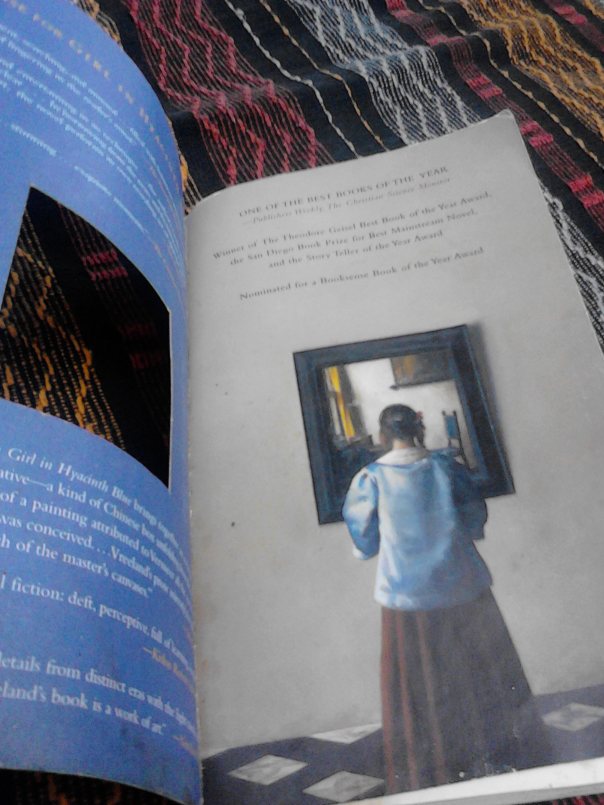Monthly Archives: September 2013
‘What Do You Care What Other People Think?’ by Richard P. Feynman
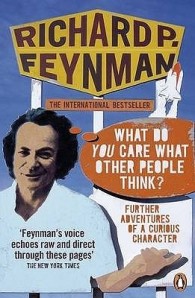 People are normally surprised when and if they learn I graduated in Physics. What I learnt later and what I have been doing ever since is not even remotely related to Physics or even the Sciences in the conventional sense. Who knows where I would have ended up if we had professors even remotely like Richard P. Feynman ? Anyway, that has nothing to do with this book or the review , so lets get going.
People are normally surprised when and if they learn I graduated in Physics. What I learnt later and what I have been doing ever since is not even remotely related to Physics or even the Sciences in the conventional sense. Who knows where I would have ended up if we had professors even remotely like Richard P. Feynman ? Anyway, that has nothing to do with this book or the review , so lets get going.
The official Feynman website introduces him as a,
“scientist, teacher, raconteur, and musician. He assisted in the development of the atomic bomb, expanded the understanding of quantum electrodynamics, translated Mayan hieroglyphics, and cut to the heart of the Challenger disaster. But beyond all of that, Richard Feynman was a unique and multi-faceted individual”
Those who have read his books or listened to his lectures online would vouch for the fact that he is indeed a raconteur at par with the best of your favorite authors. The fact is proved yet again in this book.
The first part is more of his personal memories – childhood, his first wife Arlene, some his travels, a few letters to his family, some other letters about him that his family received after he passed away and similar anecdotes from his life. I found the first chapter quite fascinating in the way his father answered his questions. You are left with a feeling of ‘no wonder he turned out to be like this.’
Once a friend ridiculed him that his father didn’t teach him anything because he didn’t know the name of a particular bird. While, Feynman knew it was the opposite. This is what his father told him,
“You can know the name of that bird in all the languages of the world, but when you are finished, you’ll know absolutely nothing whatever about the bird. You’ll only know about humans in different places, and what they call the bird. So let’s look at the bird and see what it’s doing – that’s what counts. “
Feynman goes on to say,
“I learned very early the difference between knowing the name of something and knowing something.”
I was ready to complete this as a random memoir kind of book when the second part started. This is where he takes us into the shocking labyrinth of the Challenger investigation . His never ending curiosity, ability to get down to the root of a problem by asking the right questions to the right people and his unwavering sense of ethics is very well brought out in this part. I am someone who believes that the solution to any problem almost always would lie with those who are handling things at the ground level. You change the name ‘NASA’ to any other organization where anything has gone wrong, the scenario would be the same.
“management reducing criteria and accepting more and more errors that weren’t designed into the device, while the engineers are screaming from below, “HELP!” and “This is a RED ALERT!”
Feynman, in his own quintessential style, brings out how some critical decisions that may affect the lives of many and millions of tax payer’s money are made based on certain factors , that might even be whimsical and which has no relevance whatsoever to the actual event. The chapter ‘ Afterthoughts’ is particularly interesting. Whether it is a NASA or an ISRO, the way the system works are not too different. The only difference could be someone as unique as Richard P. Feynman and what a difference it made!
Verdict : Was prepared to give this a 3.5 or at the most 4 while reading the first part. Halfway through the second part I knew it had to be nothing less than 5. Do read it for the interesting bits of life of a brilliant mind and the great lessons that a major disaster imparts to us as human beings and cogs of organizations.
5/5
‘Cobalt Blue’ by Sachin Kundalkar
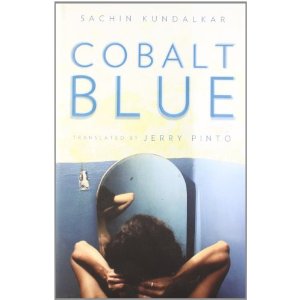 There are so many literary gems in our regional languages that we miss either because we do not know the language or somehow we tend to look down on them. Now that I think of it, many of the books that I absolutely loved in the recent past have all been translations. This book was originally written in Marathi and translated beautifully into English by Jerry Pinto.
There are so many literary gems in our regional languages that we miss either because we do not know the language or somehow we tend to look down on them. Now that I think of it, many of the books that I absolutely loved in the recent past have all been translations. This book was originally written in Marathi and translated beautifully into English by Jerry Pinto.
A typical middle class Marathi family , an empty room with a separate entrance that once was the abode of the grandparents, where the smell of amritanjan still lingers. In comes an unconventional paying guest, changing the lives of two siblings, the younger son and the daughter of the family.
The book is in two parts , first one a sort of conversation where the brother Tanay talks to the protagonist, taking us through their relationship and how it ended. The second part, as a story told by Anuja, his sister after she comes back from a six month long elopement with the same guy. What makes the story interesting is how each relationship builds, without either of them knowing the other part. One is left to wonder in between what sort of guy the painter is. He is introduced as a loner, with no close friends or relatives, living pretty much on his own.
Some contradictions are quite interesting and is reflective of how we, as a society is changing, while trying not to change too much. Anuja is portrayed as a non-conventional girl, who goes on treks and rock climbing, volunteers for a pro-environment organization and the like. Her family seems to have accepted this about her. But, in the true Indian middle class style, she is expected to stay away from the male paying guest. That she finds her avenues is another matter altogether.
More interesting is how two boys spending their time together is taken for granted. Tanay’s frequent visits and the long time that he spends in the guest’s room is never questioned, there is not an iota of doubt in his family’s minds. His angst at discovering that he is not inclined to the conventional manner of love, the casual relationships that he gets into and the lonely world that people of a different sexual orientation inhabits, is portrayed in a very matter of fact manner. I particularly loved the way the author has handled this subject in such a sensitive manner. The thoughts of both Tanay and Anuja brings out their characters so beautifully, while their common love stays an enigma to them as well as the readers.
I was curious about the author after having read through the book, so mature were the thoughts and treatment. It was a mild but pleasant shock to discover that he started writing this book when he was 20 and completed it at 22. Wisdom need not be correlated to age, I realize.
A big thanks to Hrishikesh who gifted this to me. But for him, I might not have even heard about it
Verdict : A sensitive subject handled very subtly. This one is for you if you like simple , but elegant prose, well sketched characters and multi shaded relationships
4/5
‘The Guernsey Literary and Potato Peel Pie Society’ by Mary Ann Schaffer
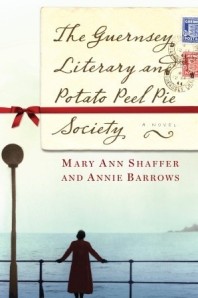 When you are tired from a sojourn in the deserts among gun fights, armed men and dilapidated monasteries and then having a ‘A Spot of Bother,‘ there comes a ray of sunlight through the gloominess that had started to cloud your mind. Wit, warmth, nice people and beautiful places, with the right amount of mushiness thrown in, this was exactly what the book doctor ordered. You see, the right time for the right book 🙂
When you are tired from a sojourn in the deserts among gun fights, armed men and dilapidated monasteries and then having a ‘A Spot of Bother,‘ there comes a ray of sunlight through the gloominess that had started to cloud your mind. Wit, warmth, nice people and beautiful places, with the right amount of mushiness thrown in, this was exactly what the book doctor ordered. You see, the right time for the right book 🙂
There is something about letters , the long forgotten long hand types, that brings out the essence of your soul. As you put your thoughts out in ink, you are actually pouring yourself out onto that piece of paper. The war is just over and writer Juliet Ashton is on the search for a topic for her new book. Out of the blue she gets a letter from one Dawsey Adams from a farm in Guernsey, Channel Islands. An old book of Juliet’s has somehow reached his hands –
‘The Selected Essays of Elia’ by an author whose real name was Charles Lamb.
Dawsey wants to read more of the author’s books. Since there are no book shops in Guernsey, asks Juliet for the name and address of one in London that he can contact. And thus begins a correspondence between the two that slowly spreads to the members of ‘The Guernsey Literary and Potato Peel Pie Society.’ As Juliet gets to know the people of Guernsey and how the society came into being and got its funny name, the other letters to and from her best friend Sophie and Sidney her publisher and Sophie’s brother, gives us a glimpse of her growing years and of her as a person. Then there is the quintessential handsome American, Mark, who is trying to woo Juliet and will do anything to make her his wife.
The story takes a predictable turn as Juliet travels to Guernsey, meets the orphaned Kit, decides to base her next book on the incidents and people there, in the background of the German occupation. You know how the story is going to end. In spite of that, what makes it so delightful is the essential goodness in all the characters. Most of them, including the Germans, seem too good to be true and all of them write witty letters. What makes it even more charming and makes a lover of books absolutely love this book is the humorous references to various books, literary characters and the joy of reading. Sample a few,
“That’s what I love about reading: one tiny thing will interest you in a book, and that tiny thing will lead you to another book, and another bit there will lead you onto a third book. It’s geometrically progressive – all with no end in sight, and for no other reason than sheer enjoyment.”
“Because there is nothing I would rather do than rummage through bookshops, I went at once to Hastings & Sons Bookshop upon receiving your letter. I have gone to them for years, always finding the one book I wanted – and then three more I hadn’t known I wanted.”
“What on earth did you say to Isola? She stopped in on her way to pick up Pride and Prejudice and to berate me for never telling her about Elizabeth Bennet and Mr. Darcy. Why hadn’t she known there were better love stories around? Stories not riddled with ill-adjusted men, anguish, death and graveyards!”
I have to thank this girl for recommending this absolutely delightful read that is entirely in the form of letters. Apparently, this is the only book from Mary Ann Schaffer. In fact, she passed away before the book was published and her niece Annie Barrows completed it based on the manuscript.
Verdict : Don’t even touch it if you are someone who looks down upon mushiness and things that are too sweet. As for ordinary souls like me, who love simple pleasures in life and believe that there is an innate goodness in most everyone, grab it. Those of you who love witty dialogues and humorous takes on life, do take the chance and peep in, I would say.
4/5
‘From The Holy Mountain: A Journey In The Shadow of Byzantium’ by William Dalrymple
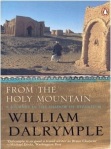 That William Dalrymple is a travel writer par excellence is a well known fact. Even while being accused of being biased in his opinions, his ability to churn out brilliant stories were never disputed. This book is no different , a story which has its roots drawn from the writings of a sixth century Byzantine monk, John Moschos, it takes us through the paths that Moschos traversed in the sixth century and Dalrymple followed some 1500 years later.
That William Dalrymple is a travel writer par excellence is a well known fact. Even while being accused of being biased in his opinions, his ability to churn out brilliant stories were never disputed. This book is no different , a story which has its roots drawn from the writings of a sixth century Byzantine monk, John Moschos, it takes us through the paths that Moschos traversed in the sixth century and Dalrymple followed some 1500 years later.
In his book, ‘The Spiritual Meadow,’ John Moschos talks about the monasteries and the teachings and life styles of the monks and pilgrims that he and his pupil Sophronius met in the course of their journey through the heart of the Byzantine empire at its prime. Centuries later, Dalrymple decides to recreate the journey and retrace their steps in an attempt to chronicle a ‘dying civilization.’
Starting from a monastery on Mount Athos, Greece, in June 1994, Dalrymple takes us through the war and man torn lands of Istanbul, Antioch, Syria, Lebanon, Palestine, the controversial West Bank, Jerusalem, Nazareth and finally ends a little less than a week before Christmas, in the desert of Kharga, in Egypt, once considered the Siberia of the Byzantine Empire. As he travels across arid deserts and deserted monasteries, the recurring theme is that of a sometimes abandoned , most times destroyed remnants of a once powerful empire. Churches in ruins that even now would surpass the most well known and well preserved Basilicas, forgotten caves and desolate structures that are dispersed throughout the Middle East with a few old world inhabitants who refuse to leave, the pictures that he presents are vivid and depressing at the same time.
A few of the themes that recur throughout the book is how Christianity was essentially an Eastern religion, how similar it is to Islam and how cultures across are so different yet remain similar. It is interesting to note how each change in culture mostly starts peacefully, then slowly the seeds of intolerance are sown to weed out what is not their own, finally culminating in a near total destruction of the one that was there originally. A matter of history repeating itself, or as a friend of mine put it, history echoing itself across regions and religions. Even in between all the strife and war, you can see Muslims coming to pray in obscure monasteries , bringing the weirdest of offerings and Orthodox priests assessing in these offerings in a very matter of fact way.
It is heart wrenching to read about people who are asked to leave their house overnight leaving behind belongings of their lifetime, coming back to find strangers closing these very same doors on their faces and who still continue to live in the never ending hope of that ‘some day’.
One would expect Dalrymple to be biased especially since the theme is based on Christianity and its decline. He admits,
“When I began this journey I had expected that Islamic fundamentalism would prove to be the Christians’ main enemy in every country I visited. But it had turned out to be more complicated than that.”
Be it fundamentalism , questions of ethnicity or issues of compromising to the diktats of majority, one fact is indisputable – it is the alarming decrease in the population of a minority that was once a majority. Almost everywhere that he visited, the educated young had already or were in the process of emigrating to the West or Australia.
You can glimpse the author’s innate sense of humor in places like Beirut where,
“Armageddon I expected, Armani I did not”
His conversations with the Orthodox priest Fr.Theophanes of the Monastery of Mar Saba on the Israeli occupied West Bank is particularly hilarious. Contrary to what my Sunday school nuns taught me, this priest says all Catholics will end up in hell along with Freemasons.
“I always thought Freemasons just held coffee mornings and whist drives and that sort of thing.”
“Wheest drives?” said Theophanes, pronouncing the word as if it were some sort of Satanic ritual. “Probably this wheest drive also. But their main activity is to worship the Devil. There are many steps,” he said knowingly. “But the last,the final step, is to meet with the Devil and have homosexual relations with him. After this he makes you Pope or sometimes the President of the United States.”
“President of the United States….?”
“Certainly. This has been proved. All the Presidents of the United States have been Freemasons. Except Kennedy. And you know what happened to him….”
He had seen Christian population looking happy only in Syria and had warned that this may change “as soon as Asad’s repressive minority regime began to crumble.” Ten years down the lane, we are getting glimpses of what is happening in Syria. It would be interesting to know what happened to the scores of other not so happy and clearly unhappy people that he wrote about.
The book has now left me with an imminent urge to visit that mysterious place that has been beckoning for sometime…Istanbul and its Hagia Sophia
Verdict : Not an easy read, you need to take it slowly. But definitely worth it if you love reading about long forgotten lands, mysterious monks, disappearing cultures, enigmatic monasteries rising out of vast deserts, in voices that are sad, happy, nostalgic, angry, resigned, hopeful…in short, if you love reading about history, religion and travel.
4/5
‘Girl in Hyacinth Blue’ by Susan Vreeland
The tattered copy had a forlorn look as it called out to me from a nondescript corner of Blossoms on Church Street. The book and its author were totally unfamiliar, yet there was something that pulled me in and made me open the cover. The window on the cover opened out to an intriguing picture and the book was mine.
A mathematics professor, who is a “mild mannered acquaintance to all rather than a friend to any, a person anxious to become invisible,’ uncharacteristically invites home, his colleague, an art teacher to view a painting. He instantly recognizes the style as that of Vermeer. The professor indignantly ascertains that it is indeed an original ,
“Look. Look at her eye. Like a pearl. Pearls were favorite items of Vermeer. The longing in her expression. And look at that Delft lighting spilling on to her forehead from the window….the grace of her hand, idle, palm up. How he consecrated a single moment in that hand…..Study, if you will, the varying depths of field. Take a look at the sewing basket placed forward on the table, as he often did, by the way, almost as an obstruction between the viewer and the figure. Is weave is diffused. slightly out of focus, yet the girl’s face is sharply in focus. Look at the lace edge of her cap. Absolutely precise to a pinprick right there at her temple. And now look at the glass of milk. Soft edged, and the map on the wall only a suggestion.”
The professor is almost shameful to disclose how it came into his possession. He just says that it was given to him by his father as he was dying. Thus starts the journey of the painting, going back in time.
It took me the first few chapters to understand the connection and then I read in one of the reviews that some of these chapters were originally written as short stories. The author traces back the painting through each of its owners spanning three centuries and finally ends with the girl in the painting.
Mostly set in Holland, each story portrays the passionate feelings that the picture of the girl evoked in its owners, if you may call them so. The reticent Hannah finds her own reflection in the girl, while for Laurens, it was a sweet remembrance of a girl he had loved and lost, For one lady it paid the price of her release and for Adriaan, it was a means for someone to bring up his illegitimate son and an uncomfortable reminder of the girl whom he did not stand by. As for the girl in the painting, it was a much awaited acknowledgement from her father.
But it was Saskia, the potato farmer’s wife who caught the true essence of it, as she admonishes her husband,
“All you see in life is the work. Just planting, hauling, shoveling, digging. That’s all life is to you. But not to me, Stijn. Not to me. There’s got to be some beauty too.”
The language is almost poetic, there are some great descriptions of the painting, specially about the shades of hyacinth. For a non- connoisseur like me, the author has given some great insights into how the great painters achieve the effect of colours and lighting that makes us immediately recognize their works as masterpieces, and how they leave their own signatures.
“Look at the direction of the brush’s stroke, those tiny grooves of the brush hairs. They have their lighted and their shaded side. Look elsewhere. You’ll find overlapping layers of paint no thicker than silk thread that give a minute difference in shade. That’s what makes it a Vermeer.”
Verdict : A short book comprising of eight short stories, this is a delightful read for a lazy afternoon. You may need some extra time to pause and reflect, at least after a couple of stories.
4/5
‘Curious Pursuits’ by Margaret Atwood
“I don’t review books I don’t like, although to do so would doubtless be amusing for the Ms Hyde side of me and entertaining for the more malicious class of reader. But either the book is really bad, in which case no one should review it, or it’s good but not my cup of tea, in which case someone else should review it.”
How could I not fall for someone who echoed my sentiments exactly! Another excerpt from the introduction to the book by the author herself, and I was hooked,
“Why is this book called Curious Pursuits? ‘Curious’ describes both my habitual state of mind – a less kind word would be ‘nosy’ – as well as the subject matter of some of these writings…….’Passionate’ might have been more accurate; however, it would have given a wrong impression, and disappointed a few men in raincoats.”
This is a priceless collection of essays, reviews, speeches and some obituaries by Margaret Atwood, five time nominee and one time winner of the Booker Prize. Covering a wide time span of almost 35 years from 1970 to 2005, the book also gives us a glimpse of a ‘woman’ writer’s life during the period.
Even though she doesn’t seem to like being a called a feminist, the female perspective is evident throughout and how! Some of her observations reminds us that nothing much has changed through the years. Sample this from the chapter ‘ The Curse of Eve- Or, What I Learned in School’,
“Wonder Woman was an Amazon princess who lived on an island with some other Amazons but no men. She had magic bullet-deflecting bracelets, a transparent airplane, a magic lasso and super skills and powers. She fought crime. There was only one catch – she had a boyfriend. But, if he kissed her, her superhuman strength disappeared like Samson’s after a clean shave. Wonder Woman could never get married and still remain Wonder Woman.”
She writes about subjects as diverse as her aunts and their influence on her writing, to reviews of books by John Updike and Marquez. If at all there is a connecting thread in at least a few posts, it is about Canadian literature and writers. One chapter that I particularly liked was ‘Introduction: Reading Blind. Introduction to The Best American Short Stories‘ where she had to select twenty short stories from a collection of hundred and twenty published stories, without knowing who the authors were and the joy of not having “to pay attention to who ought to be in because of his or her general worthiness or critical hosannas.”
The obituaries that I liked best were of two authors I’d never heard of before – Carol Shields and Studs Terkel – books by both of them are right on top of my ever growing ‘to read’ list. Another captivating chapter is ‘George Orwell: Some Personal Connections.’ Her reviews include ‘Beloved‘ by Toni Morrison, ‘The Witches of Eastwick‘ by John Updike, ‘An Experiment In Love‘ by Hilary Mantel and ‘Snow‘ by Orhan Pamuk. My favorite though, is what she calls ‘The Indelible Woman’ – her thoughts on Virginia’s Woolf’s ‘To The Lighthouse,‘ that she first read at nineteen and then again forty years later. You nod your head in agreement when she says,
“Some books have to wait until you’re ready for them.”
What makes this book so interesting is that you might have had no clue about the people , books and incidents that the author is writing about, nevertheless you enjoy it to the core. Her writing style seems so easy flowing that it can come only with experience. The sharp wit and tongue in cheek humor is something that has to be read to be truly relished.
Spell bound, I went and got myself a copy of her ‘Lady Oracle, ‘the back cover blurb sounds quite sensational,
“Joan Foster is the bored wife of a myopic ban-the bomber. She takes off overnight as Canada’s new superpoet, pens lurid gothics on the sly, attracts a blackmailing reporter, skids cheerfully in and out of menacing plots, hair-raising traps, and passionate trysts, and lands dead and well in Terremoto,Italy.”
Stand by for the review, folks 🙂
Verdict – A definite one on the list for the girls out there, not to be gulped all at once, it is a ‘sip, swirl and savor in leisure’ one. Get your very own copy, keep it by your bedside and on those occasions when life seems to be too much because of ‘whoever – knows -who,’ re read the chapter ‘Writing the Male Character’.
This is also for our equal halves who have a definite sense of humor and do not mind listening to some views and reviews from a tribe member of ours.
4.5/5
